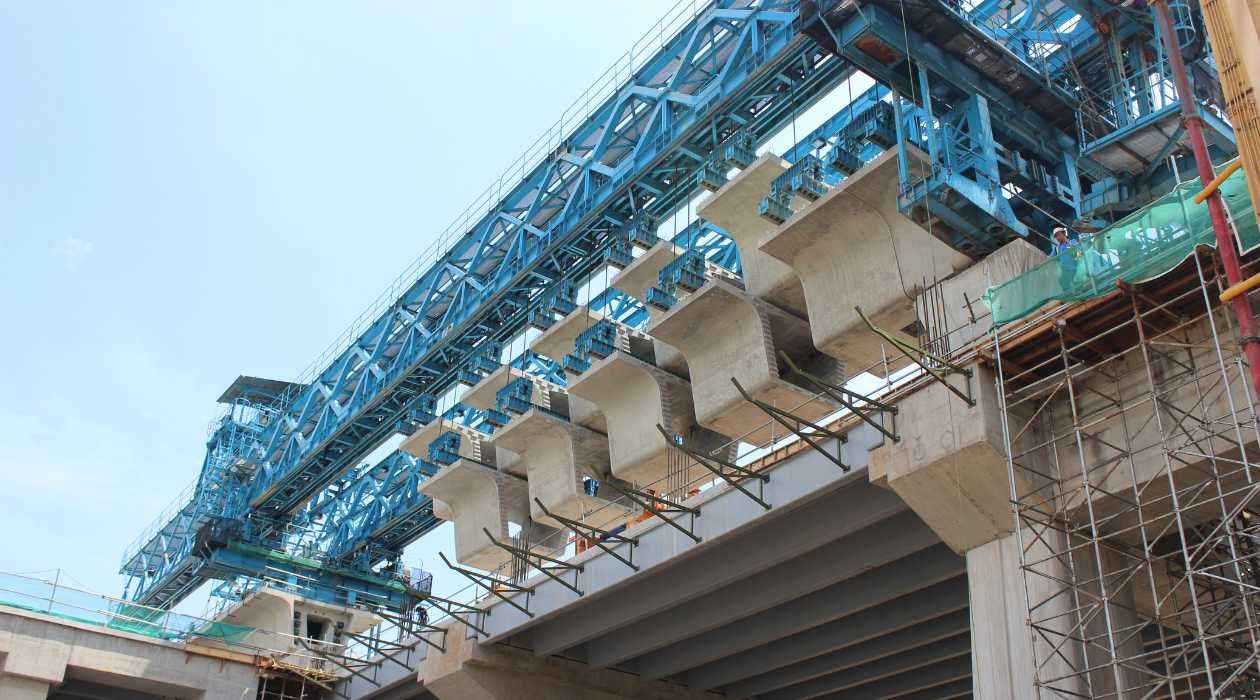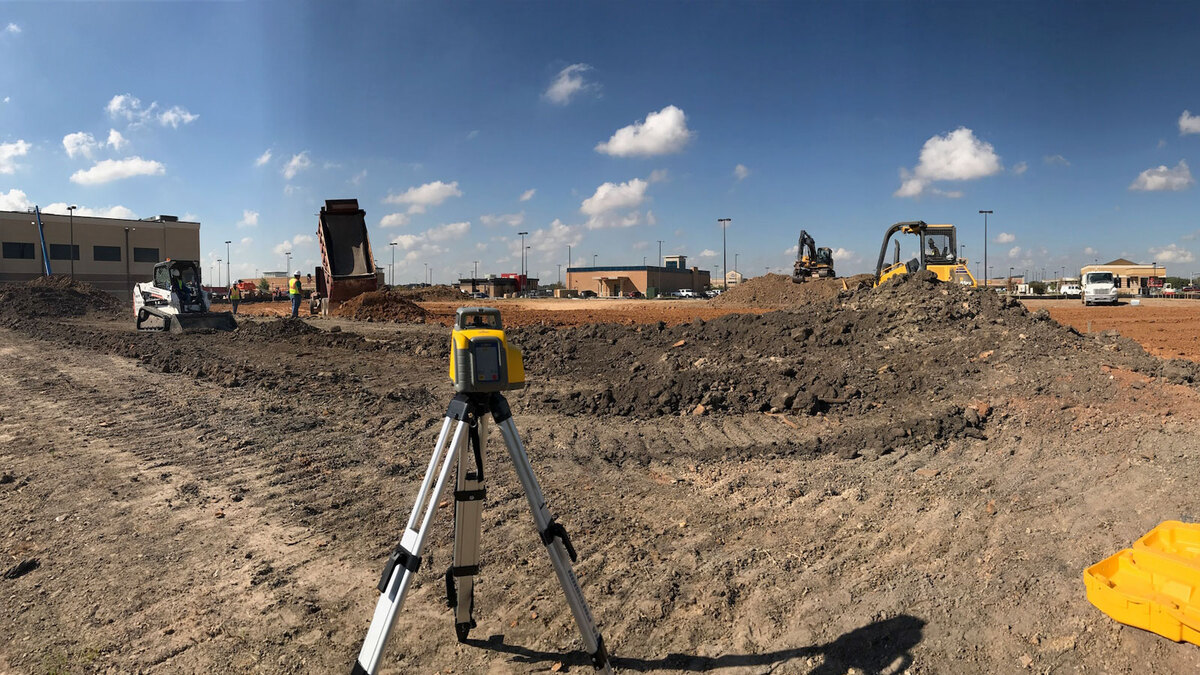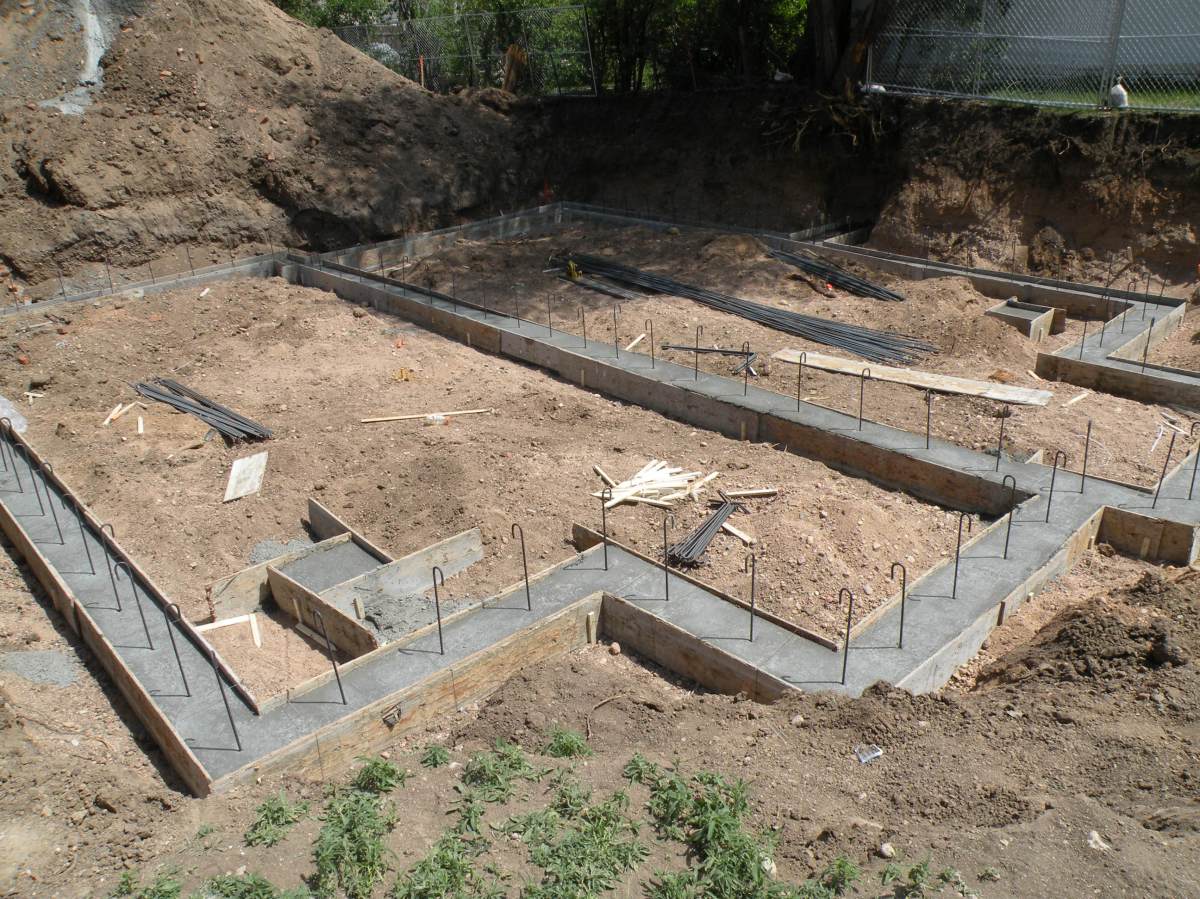Home>diy>Building & Construction>What Is ITB In Construction


Building & Construction
What Is ITB In Construction
Modified: August 28, 2024
Learn what ITB means in the context of building construction. Understand its significance and how it influences the construction process.
(Many of the links in this article redirect to a specific reviewed product. Your purchase of these products through affiliate links helps to generate commission for Storables.com, at no extra cost. Learn more)
Introduction
When it comes to the world of construction, there are numerous processes and procedures that play a crucial role in the successful completion of a project. One such process is ITB, which stands for Invitation to Bid. ITB plays a vital role in the construction industry as it facilitates the selection of contractors for a particular project through a competitive bidding process.
In simple terms, ITB is a formal invitation extended by the owner or project manager to contractors to submit their bids for a construction project. It serves as a means to communicate the project requirements, scope, and specifications to potential contractors, giving them an opportunity to compete for the job.
The purpose of this article is to delve deeper into the concept of ITB in construction, highlighting its benefits, key elements, and the steps involved in the ITB process. We will also discuss the common challenges faced during ITB implementation and provide best practices for successful ITB implementation.
Whether you are new to the construction industry or looking to improve your understanding of ITB, this article will serve as a comprehensive guide to help you navigate the intricacies of the ITB process.
Key Takeaways:
- ITB, or Invitation to Bid, is a crucial process in construction that promotes transparency, fairness, and competition. It enables owners to select the most qualified contractor through a competitive bidding process, ensuring cost-effective and high-quality project execution.
- Implementing ITB effectively requires thorough planning, clear communication, and adherence to best practices. By promoting transparency, using objective evaluation criteria, and allowing sufficient time for the bidding process, owners and project managers can overcome common challenges and achieve successful outcomes in their construction projects.
Read more: What Is Construction
Definition of ITB
ITB, which stands for Invitation to Bid, is a fundamental process in the construction industry that involves inviting contractors to submit competitive bids for a construction project. It is a formal and transparent method of selecting the most suitable contractor based on their qualifications, experience, and pricing.
When an owner or project manager decides to initiate a construction project, they typically prepare a detailed set of project plans, specifications, and other relevant documents. These documents outline the project requirements, scope, timeline, and budget. The owner then issues an ITB to a select group of contractors, inviting them to bid on the project.
The ITB contains essential information such as project location, scope of work, technical specifications, contract terms, bid submission deadline, and evaluation criteria. It provides the contractors with clear instructions on how to prepare and submit their bids, ensuring a fair and competitive bidding process.
Contractors who receive the ITB carefully review the project documents to assess the feasibility, complexity, and estimated costs associated with the project. They evaluate the requirements and determine if the project aligns with their expertise, capabilities, and available resources. If interested, contractors prepare their bidding documents, which typically include a bid form, project schedule, cost breakdown, quality control plan, and any other relevant information requested by the owner or project manager.
Once the bid submission deadline has passed, the owner or project manager reviews the received bids and evaluates them based on predetermined criteria such as price, experience, past performance, and qualifications. Finally, a contract is awarded to the contractor with the most competitive bid, and the construction project moves forward.
The ITB process is aimed at promoting transparency, fairness, and competition in the construction industry. It allows contractors of varying sizes and expertise to participate in bidding for projects, fostering a healthy market environment.
Now that we have defined ITB, let us explore the purpose and benefits of using ITB in construction.
Purpose of ITB in Construction
The primary purpose of ITB (Invitation to Bid) in construction is to select the most qualified contractor for a construction project through a competitive bidding process. The ITB serves as a crucial tool for owners or project managers to solicit bids from contractors, evaluate their qualifications, and make an informed decision.
Here are the key purposes of ITB in construction:
- Obtain Competitive Bids: The main objective of ITB is to invite multiple contractors to submit competitive bids. By issuing an ITB, owners can attract a wide pool of contractors, promoting healthy competition among them. This allows owners to compare bids and select the most cost-effective option.
- Evaluate Contractor Qualifications: ITB enables owners to assess the qualifications and capabilities of potential contractors. Bidders are typically required to submit their past work experience, references, financial capacity, licenses, and certifications. This helps owners ensure that the selected contractor has the necessary expertise and resources to complete the project successfully.
- Ensure Transparency: ITB promotes transparency in the bidding process. By providing detailed project requirements, specifications, and evaluation criteria, owners ensure that all participating contractors have access to the same information. This transparency fosters fairness and eliminates any perceived biases in the selection process.
- Control Project Costs: ITB allows owners to control project costs by selecting the contractor with the most competitive bid. Contractors are required to provide detailed cost breakdowns, allowing owners to evaluate and compare pricing for materials, labor, and other project components. By selecting a cost-effective bid, owners can maximize their project budget.
- Maximize Project Quality: Through ITB, owners can assess the quality control plans and methodologies proposed by contractors. It provides an opportunity to evaluate the contractor’s commitment to adhering to project specifications, industry standards, and best practices. This ensures that the chosen contractor will deliver high-quality work.
Overall, the purpose of ITB in construction is to establish a fair and transparent process for selecting the most qualified contractor who can meet the project requirements within the allocated budget and timeline. By promoting competitive bidding and evaluating contractor qualifications, ITB contributes to the successful execution of construction projects.
Next, let us explore the benefits of using ITB in construction.
Benefits of using ITB in Construction
The use of ITB (Invitation to Bid) in construction offers several benefits to both owners and contractors involved in the project. Let’s explore some of the key advantages of using ITB:
- Competitive Pricing: ITB encourages contractors to submit competitive bids, resulting in more favorable pricing for the owner. Contractors are motivated to offer their best pricing to secure the project, making it beneficial for owners seeking cost-effective solutions.
- Transparency and Fairness: ITB ensures a transparent and fair bidding process. All participating contractors receive the same project information, bid requirements, and evaluation criteria. This transparency eliminates any bias and promotes a level playing field, instilling confidence in the selection process among both contractors and owners.
- Access to a Wider Pool of Contractors: ITB enables owners to reach out to a larger number of contractors, expanding their options for selecting the most qualified contractor for the project. This increased competition allows owners to assess a broader range of expertise, experience, and pricing, ultimately leading to better decision-making.
- Quality Control and Compliance: Through the ITB process, owners can evaluate the quality control plans, methodologies, and compliance measures proposed by contractors. This ensures that the selected contractor is committed to delivering high-quality work, adhering to project specifications, industry standards, and regulatory requirements.
- Contractor Qualification Assessment: By requiring contractors to submit qualifications, references, and past work experience, ITB allows owners to assess the suitability and capabilities of potential partners. Owners can evaluate the track record, financial stability, and reputation of contractors, ensuring they have the necessary resources and expertise to successfully execute the project.
- Cost and Schedule Control: ITB provides owners with detailed cost breakdowns from bidders, allowing for a comprehensive evaluation of project costs. Additionally, the bidding process includes schedules proposed by contractors, enabling owners to assess the feasibility and timeline of project completion. This helps owners maintain control over project budgets and schedules.
- Efficient Project Delivery: Through competitive bidding and contractor qualification assessments, ITB contributes to selecting the most capable contractor for the project. This increases the likelihood of successful project execution, minimizing delays, disputes, and performance issues that can arise from selecting an inappropriate contractor.
Overall, the use of ITB in construction provides numerous benefits, including cost savings, transparency, access to a wider range of contractors, and better control over project quality, costs, and schedules. It empowers owners to make informed decisions while ensuring fairness and competition in the construction industry.
Next, let’s explore the key elements of ITB in construction.
Key Elements of ITB
When issuing an ITB (Invitation to Bid) in the construction industry, there are several key elements that need to be included to ensure a clear and comprehensive communication between the owner or project manager and the potential bidders. These elements provide important information and instructions to the contractors regarding the project requirements, bidding process, and evaluation criteria. Let’s explore the key elements of ITB:
- Project Overview: The ITB should begin with a concise project overview, providing a brief description of the project, its location, and the owner or project manager’s contact information. This helps contractors quickly understand the scope and nature of the project.
- Project Specifications: The ITB should provide detailed specifications of the project, including architectural, structural, electrical, and mechanical requirements. This section should outline the performance standards, materials to be used, and any specific codes or regulations that the contractors must comply with.
- Scope of Work: Clearly define the scope of work for the project, specifying the tasks and deliverables expected from the contractor. This may include construction activities, site preparation, installation, testing, and commissioning requirements.
- Contract Terms: Detail the contract terms and conditions that will govern the project. This should include information on the contract type, project duration, payment terms, insurance requirements, and any other legal aspects relevant to the project.
- Bid Submission Requirements: Clearly outline the requirements for bid submission. This should include the deadline for bid submission, the format and number of copies required, the method of submission (in person or electronically), and any specific documentation or forms that need to be included in the bidding package.
- Evaluation Criteria: Specify the criteria that will be used to evaluate the bids. This may include factors such as price, experience, qualifications, past performance, and compliance with project requirements. Clearly state the weighting or importance assigned to each criterion to guide contractors in preparing their bids.
- Clarification and Pre-Bid Meeting: Provide information on any scheduled pre-bid meetings or opportunities for clarification. This ensures that contractors have the chance to seek clarifications on project requirements, specifications, or any other doubts they may have.
- Confidentiality and Non-Disclosure: Include a statement or clause to maintain the confidentiality of the bidding process. This may require bidders to keep the project details and pricing confidential and not disclose them to third parties.
- Owner’s Rights: Clearly state the owner’s rights to reject any or all bids, waive minor irregularities, cancel the ITB, or disqualify bidders if they fail to meet the specified requirements.
These key elements provide a solid foundation for an effective and informative ITB. By including these elements, owners or project managers ensure that all necessary information is provided to potential bidders, facilitating a smooth and efficient bidding process.
Now that we understand the key elements of ITB, let’s move on to the steps involved in the ITB process.
ITB stands for Invitation to Bid in construction. It is a formal document that invites potential contractors to submit a bid for a construction project. Make sure to carefully review the ITB requirements and provide a thorough and competitive bid.
Read more: What Is OCIP In Construction
Steps in the ITB Process
The ITB (Invitation to Bid) process in construction involves several sequential steps that enable owners or project managers to select the most qualified contractor for a project. These steps ensure a systematic and fair evaluation of bids. Let’s explore the typical steps in the ITB process:
- Project Planning and Documentation: The first step is for the owner or project manager to plan the project and prepare all the necessary documentation, including project plans, specifications, and contractual requirements.
- Issuing the ITB: The owner or project manager then issues the ITB to a select group of contractors who are potentially capable of handling the project. The ITB includes all the relevant project details, requirements, and instructions for bid submission.
- Bid Solicitation and Clarification: Contractors review the ITB and may seek clarification from the owner or project manager regarding any ambiguity or confusion in the bid instructions or project requirements.
- Bid Preparation: Contractors interested in bidding for the project prepare their bidding documents, including the bid form, cost breakdown, project schedule, quality control plan, and any other requested information. Contractors must ensure that their bids meet all the specified requirements.
- Bid Submission: Contractors submit their bids by the specified deadline and through the designated method outlined in the ITB. Bids are usually sealed to maintain confidentiality until the bid opening date.
- Bid Opening and Evaluation: The owner or project manager conducts a bid opening session in the presence of relevant stakeholders. Bids are opened and recorded, but the contents are not revealed to maintain transparency. The evaluation process then begins, wherein bids are assessed based on predetermined criteria such as price, experience, qualifications, and compliance with project requirements. The evaluation may involve multiple rounds of assessments.
- Contractor Selection and Negotiation: Once the bid evaluation is completed, the owner or project manager selects the most qualified contractor based on the evaluation results. If necessary, negotiations may take place to finalize the contract terms and conditions.
- Contract Award: The contract is awarded to the selected contractor, and a formal agreement is signed between the owner and the contractor. This marks the official start of the construction project.
- Contract Execution and Project Implementation: After the contract is awarded, the contractor proceeds with the execution of the project, adhering to the agreed-upon terms, specifications, and schedule. The owner or project manager provides necessary oversight and coordination throughout the construction process.
- Project Completion and Closeout: Once the construction work is completed, the contractor delivers the project to the owner, who inspects and verifies the work’s satisfactory completion. Final payments are made, and the project is officially closed out.
It is important to note that the specific steps involved in the ITB process may vary depending on the project’s complexity, contractual requirements, and local regulations. However, the general flow remains consistent across most ITB processes.
Next, let’s explore some common challenges in implementing ITB and the best practices to overcome them.
Common Challenges in Implementing ITB
While the ITB (Invitation to Bid) process in construction offers numerous benefits, it also presents certain challenges that owners and project managers need to address for successful implementation. Understanding and proactively tackling these challenges is essential to ensure a smooth and efficient ITB process. Let’s explore some common challenges:
- Incomplete or Ambiguous Bid Documentation: One of the main challenges is ensuring that the bid documentation is comprehensive, clear, and free from ambiguities. Any gaps or uncertainties in the documents can lead to confusion among contractors and affect the quality and accuracy of bids received.
- Difficulty in Qualification Assessment: Assessing the qualifications and capabilities of contractors based on submitted documentation can be challenging. It requires careful evaluation of past project experience, financial stability, and references to ensure that the selected contractor is capable of delivering the project successfully.
- Limited Competition: Sometimes, owners may experience a limited number of bids received, resulting in limited competition. This can affect the quality and competitiveness of the bids, limiting the options for selecting the most suitable contractor.
- Bidder Misinterpretation of Project Requirements: Contractors may misinterpret project requirements or fail to fully understand the scope of work. This can result in bids that do not accurately address the project’s needs, making the evaluation process more challenging for the owner or project manager.
- Time Constraint: The ITB process requires sufficient time for bid preparation, submission, and evaluation. Owners and project managers may face challenges in allocating the necessary time while also ensuring timely project execution.
- Bidder Prequalification: Prequalifying bidders can be a complex process, especially for large or complex projects. Managing the prequalification process effectively and efficiently can be a challenge for owners and project managers.
- Competitive Pricing: Owners need to ensure that bid pricing remains competitive and reflects the scope and quality of work required. Achieving the right balance between cost efficiency and quality can be challenging, especially when facing bids with a wide price variation.
Addressing these challenges requires careful planning, clear communication, and implementation of best practices to mitigate any potential risks. By being aware of these challenges and taking proactive measures, owners and project managers can overcome the hurdles and achieve successful outcomes in their ITB process.
Next, let’s explore some best practices for successful ITB implementation.
Best Practices for Successful ITB Implementation
Implementing the ITB (Invitation to Bid) process in construction requires attention to detail, effective communication, and adherence to best practices. By following these best practices, owners and project managers can ensure a smooth and successful ITB implementation:
- Thoroughly Plan the Project: Before issuing the ITB, thoroughly plan the project, including defining project goals, scope, and requirements. Develop detailed project documentation, including specifications, drawings, and contractual terms. A well-planned project sets a strong foundation for the ITB process.
- Create Clear and Comprehensive Bid Documentation: Ensure that all bid documents are clear, accurate, and comprehensive. Clearly specify the project requirements and evaluation criteria. Include detailed specifications, guidelines, and any applicable industry standards. Minimize ambiguity to enable contractors to submit accurate and competitive bids.
- Allow Sufficient Time for the ITB Process: Provide contractors with ample time to review the bid documentation, seek clarifications, and prepare their bids. Set realistic timelines for bid preparation, submission, and evaluation. Adequate time allocation enhances the quality of bids received and allows for thorough evaluation.
- Promote Transparency: Maintain transparency throughout the ITB process. Share project information equally with all contractors, provide clarifications promptly, and conduct fair and impartial bid evaluations. Transparency builds trust among contractors and ensures a level playing field for all bidders.
- Use Objective Evaluation Criteria: Establish clear and objective evaluation criteria for assessing bids. Clearly define the weightage or importance assigned to each criterion, such as price, qualifications, experience, and compliance with project requirements. This ensures an unbiased evaluation process.
- Prequalify Bidders: Consider implementing a prequalification process to assess the qualifications and capabilities of potential bidders before issuing the ITB. This helps ensure that only qualified and competent contractors participate in the bidding process, streamlining the evaluation and selection process.
- Communicate Effectively: Maintain open and clear communication with contractors throughout the ITB process. Address queries and provide clarifications promptly. Send regular updates and notifications regarding any changes or amendments to the bid documents or timelines. Effective communication minimizes confusion and enhances bid quality.
- Conduct a Thorough Bid Evaluation: Devote sufficient time and resources to evaluate bids thoroughly. Assess bids based on the predetermined evaluation criteria and conduct multiple rounds of evaluations if necessary. Document the evaluation process, ensuring transparency and accountability in the decision-making process.
- Consider Competitive Pricing: Ensure that bid prices are competitive and reasonable. Evaluate pricing in relation to the scope of work, quality expectations, and market rates. Avoid unfairly low bids that may compromise the quality of the project. Seek a balance between cost-effectiveness and quality.
- Post-Bid Communication: After bid evaluations are complete, communicate the outcome to all participating bidders. Provide relevant feedback, if possible, to help contractors understand the decision-making process. Maintain good relationships with all bidders, promoting a positive reputation in the industry.
By implementing these best practices, owners and project managers can enhance the efficiency, fairness, and success of the ITB process. Effective planning, clear communication, objective evaluations, and transparent procedures ensure a robust and competitive bidding process, resulting in the selection of the most qualified contractor for the project.
Now let’s wrap up the article.
Conclusion
The ITB (Invitation to Bid) process is a vital component of the construction industry, facilitating the selection of the most qualified contractor for a project through a competitive bidding process. It serves as a means for owners and project managers to communicate project requirements, evaluate contractor qualifications, and make informed decisions.
Throughout this article, we have explored the definition of ITB and its purpose in construction. We have discussed the benefits of using ITB, including competitive pricing, transparency, access to a wider pool of contractors, and better control over project quality, costs, and schedules. We have also delved into the key elements of ITB, such as project overview, specifications, scope of work, bid submission requirements, and evaluation criteria.
Additionally, we have outlined the steps involved in the ITB process, ranging from project planning and documentation to contract award and project closeout. We have shed light on some common challenges in implementing ITB, including incomplete bid documentation, qualification assessment difficulties, limited competition, and time constraints. However, by following best practices such as thorough planning, clear communication, objective evaluation criteria, and transparency, these challenges can be overcome.
Implementing ITB effectively ensures a fair and transparent selection process, leading to successful project execution. It allows owners to maximize the value of their project while maintaining control over costs, schedules, and quality. For contractors, participating in the ITB process offers an opportunity to showcase their qualifications, compete on a level playing field, and secure promising construction projects.
As the construction industry continues to evolve, understanding and implementing the ITB process becomes increasingly important. By adhering to the principles and best practices outlined in this article, owners and project managers can navigate the complexities of ITB and achieve positive outcomes in their construction projects.
Whether you are an industry professional looking to optimize your ITB process or an aspiring contractor seeking to understand the bidding process, we hope that this comprehensive guide has provided you with valuable insights and knowledge.
So, embrace the power of ITB in construction, and may your future projects be successful and prosperous.
Frequently Asked Questions about What Is ITB In Construction
Was this page helpful?
At Storables.com, we guarantee accurate and reliable information. Our content, validated by Expert Board Contributors, is crafted following stringent Editorial Policies. We're committed to providing you with well-researched, expert-backed insights for all your informational needs.















0 thoughts on “What Is ITB In Construction”